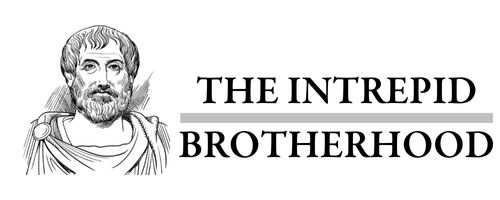Toward the end of my book, The Intrepid Brotherhood, I made the observation that the company where most of the events of the story occurred had made what I thought was a very positive step. They had created and filled a Chief Technology Officer position, a move that indicated their recognition of the importance of making sure that the information technology function was present at the strategic planning table. My sincere hope was that this would minimize the reoccurrence of anything similar to my circumstances from ever happening again. However ……………… contacts in the community have told me recently that, apparently, old habits die hard.
The co-conspirator who was the benefactor of my termination occupied my former director position for almost 16 years. When he retired, several department employees applied to replace him. Of the three finalists, the individual with the least experience and qualifications was selected for the position. Admittedly, that’s not the first time that has ever happened in the employment world. However, immediately following the selection process, the new IT Director approached his boss, the Chief Technology Officer, with an amazing observation. He claimed his two competitors for the director position were not qualified to occupy the positions they had performed in for years. On the surface, this at least implies that he wanted those positions vacated so that they could be awarded to other applicants.
As incredibly transparent as this sounds, the CTO actually gave the new IT Director the green light to open these two positions to the competitive application process, which meant their current occupants had to re-apply for the jobs that they were currently performing and had performed for some time. In the end, neither of them prevailed in retaining their respective positions. One of them left and went to work for another utility, while the other took a lower paying position in order to stay and complete his years of service for retirement.
This whole scenario is wrong is so many ways, it is hard to determine where to begin. But, let’s look at how the real leader, the Chief Technology Officer, should have reacted to such a request. When approached with such an unorthodox proposal, he should have had a very frank conversation with the new IT Director about what it means to be a truly inspirational leader. After establishing that there is no accommodation in leadership for retribution, revenge or persecution, the next point should have been to establish what he expected as evidence of leadership capability. Did this new director have a commitment to focusing on the growth and well-being of the people that he managed? Did he have a plan to continually “grow himself” as a coach and mentor?
If he was able to convince the CTO that he understood that his success depended on making his employees successful, the next analysis should have concentrated on the phenomenal contention that two staff members could have gone through many annual performance evaluations and things like 360° reviews and still, at some point, ended up where the requirements of their respective positions exceeded their capabilities.
Then, given that the analysis was confirmed and these two really did suffer from some performance deficiency that needed remediation, the question should have been: who’s culpable? Them …… or the company? Did the former IT Director simply ignore the requirement to true up staff capabilities with evolving technology requirements? Were continuing education and training requests refused or ignored? Did the CTO not perform any staff resource modeling and skills inventory when he assumed his new position to determine if he had the resources to meet the demands on his department(s)? How does something like this actually happen in an organization that would like to portray itself as caring, communicative and respectful?
I made the observation in my book that, in my opinion, creating and filing a CTO position at that company was a huge step in the right direction from the perspective of strategically planning how to make the best use of technology resources. Indeed, the company has made significant positive changes over the last 18 years in order to put the events that were related in my book behind them. However, it appears they need to take a deep look at their leadership practices and, preferably, adopt a servant leadership approach so that the type of questions I conveyed above are automatically asked in similar situations. Or, better yet, so that those situations do not emerge at all.
